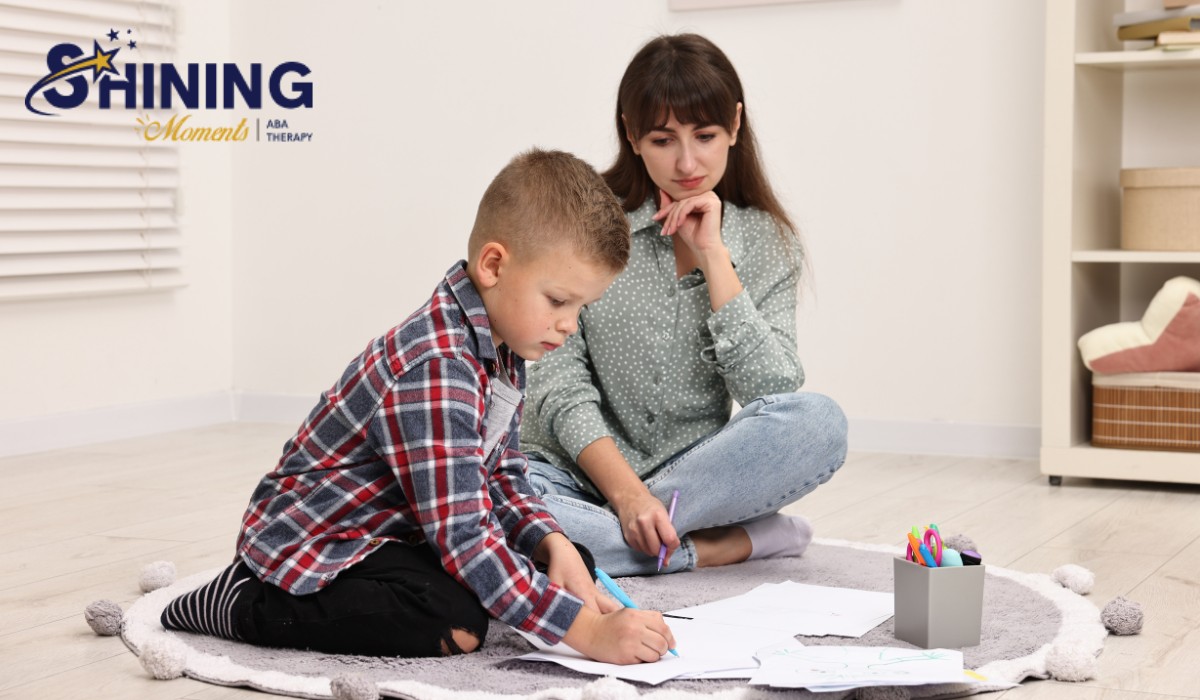Key Points:
- Stimulus control transfer is a core ABA technique that helps children respond correctly to cues across different environments.
- Effective transfer enhances learning, reduces errors, and promotes independence in daily activities.
- Parents can support the process through consistent practice, prompting strategies, and reinforcement.
Applied Behavior Analysis (ABA) therapy is widely recognized for helping children with autism develop meaningful skills, from communication and social interaction to self-care. One essential technique within ABA is stimulus control transfer, a method that ensures children respond appropriately to the correct cues, rather than only to specific prompts from therapists. For parents, understanding this concept can clarify why certain teaching strategies are used and how these techniques translate to everyday success.
What is Stimulus Control in ABA?
Before diving into stimulus control transfer, it’s important to understand stimulus control itself. Simply put, stimulus control occurs when a child consistently responds correctly to a particular cue or signal. This could be a verbal instruction, a visual prompt, or an environmental cue.
For example, a child may learn to say “thank you” only when prompted by a therapist holding a picture card. In this case, the picture card has stimulus control over the behavior. The ultimate goal of ABA therapy is for the child to respond correctly across different cues and environments, not just in the presence of a specific prompt.
Why it matters:
- Ensures learning is flexible and generalizable.
- Reduces dependence on prompts.
- Builds independence and functional skills for daily life.
Stimulus control lays the foundation for what ABA therapists call stimulus control transfer, which is the next critical step in skill mastery.
 Understanding Stimulus Control Transfer
Understanding Stimulus Control Transfer
Stimulus control transfer occurs when a child learns to perform a behavior in response to a natural cue, without needing a therapist’s prompt. Essentially, the control of the behavior shifts from a structured prompt to a natural environmental signal.
For example:
- A therapist initially prompts a child to wash their hands with hand-over-hand assistance.
- Through repeated practice, the child begins washing hands whenever entering the bathroom, even without prompting.
This transfer is vital because it ensures ABA skills aren’t limited to therapy sessions—they become usable in real-life situations.
Key components of successful stimulus control transfer:
- Prompt fading: Gradually reducing assistance so the child relies more on natural cues.
- Generalization: Practicing the behavior in multiple settings and with different people.
- Reinforcement: Using rewards and praise strategically to encourage independent responding.
Why Stimulus Control Transfer is Important
Stimulus control transfer is more than just a teaching strategy—it addresses common pain points parents face in ABA therapy:
- Reducing prompt dependence: Without transfer, children may only perform tasks when prompted, limiting independence.
- Improving consistency: Skills can generalize across home, school, and community settings.
- Boosting confidence: Children experience success in natural contexts, reinforcing motivation.
- Enhancing daily functioning: Behaviors like brushing teeth, requesting items, or following routines become more automatic.
By focusing on stimulus control transfer, ABA therapy bridges the gap between structured learning and functional daily skills.
Step-by-Step Guide to Stimulus Control Transfer
Parents and therapists work together to gradually transfer stimulus control from prompts to natural cues. Here’s a practical breakdown of the process:
1. Identify the Target Behavior
First, define the skill to be taught. Examples:
- Saying “please” when requesting.
- Putting toys away after playtime.
- Washing hands before meals.
Clearly defining the behavior ensures consistent measurement and tracking.
2. Select the Initial Prompt
Determine the level of support needed to elicit the correct behavior. Types of prompts include:
- Verbal prompts: Giving instructions (“Clap your hands”).
- Gestural prompts: Pointing, nodding, or using hand signals.
- Physical prompts: Hand-over-hand guidance.
- Visual prompts: Picture cues or written instructions.
3. Reinforce Prompted Behavior
Immediately reinforce the correct response. Reinforcement can be:
- Praise (“Great job!”)
- Tokens or small rewards
- Access to a preferred activity
The reinforcement links the behavior with a positive outcome, increasing motivation.
4. Gradually Fade the Prompt
Prompt fading is the core of stimulus control transfer. Gradual reduction prevents frustration and encourages independence. Strategies include:
- Reducing intensity: Move from hand-over-hand to light touch to no touch.
- Delaying prompts: Give the child time to respond before assisting.
- Using partial cues: Provide only verbal or gestural cues instead of full assistance.
5. Practice Across Environments
Children need multiple opportunities to practice skills in various contexts. Consider:
- Home, school, playground
- With family, friends, or therapists
- Different times of day and routines
This generalization strengthens stimulus control and ensures skills are functional.
6. Monitor and Adjust
Keep track of progress through data collection. If the child struggles, the prompt may need to be temporarily reintroduced. Adjustments ensure steady progress without overwhelming the child.
 Common Challenges in Stimulus Control Transfer
Common Challenges in Stimulus Control Transfer
Even with structured ABA programs, some children may encounter difficulties. Understanding these can help parents support progress:
- Prompt dependence: The child may continue to wait for assistance rather than respond independently.
- Inconsistent responding: Behaviors may occur in therapy but not at home or in community settings.
- Overgeneralization: Sometimes, children respond to the wrong cue due to similarity between prompts.
- Motivation issues: Lack of reinforcement or unclear expectations can reduce engagement.
Addressing these challenges often involves revisiting prompt fading, adjusting reinforcement, or increasing practice opportunities.
How Parents Can Support Stimulus Control Transfer at Home
Parents play a crucial role in reinforcing ABA skills outside of sessions. Consistency and repetition are key. Here are practical strategies:
- Follow therapy guidance closely: Use the same cues, prompts, and reinforcement methods recommended by the ABA therapist.
- Provide daily practice: Embed target skills into routines like mealtime, dressing, or playtime.
- Reinforce independence: Celebrate when your child initiates or completes a task without prompts.
- Track progress: Keep simple records to share with the ABA team, highlighting successes and areas needing support.
- Use natural rewards: Praise, access to toys, or a short preferred activity reinforces the real-life value of the behavior.
Benefits of Stimulus Control Transfer in ABA
When stimulus control transfer is successful, children gain:
- Greater independence: Tasks can be completed with less supervision.
- Improved functional skills: Daily routines and social interactions become smoother.
- Better generalization: Skills learned in therapy carry over to home, school, and community settings.
- Stronger motivation: Children experience consistent success, encouraging further learning.
ABA therapy programs, such as those offered by Shining Moments ABA, focus on these benefits, creating individualized plans that balance structured teaching with natural reinforcement opportunities.
 Stimulus Control Transfer in Action: Real-World Examples
Stimulus Control Transfer in Action: Real-World Examples
Seeing the technique in practice makes it easier to understand. Consider these scenarios:
Example 1: Requesting Items
A child initially learns to ask for water when given a visual card prompt. Over time, the prompt fades, and the child begins asking for water verbally whenever thirsty, without any visual cue.
Example 2: Hand Washing
A child practices washing hands after a therapist provides step-by-step guidance. Through repeated practice and fading prompts, they eventually wash hands independently whenever entering the bathroom.
Example 3: Cleaning Up Toys
Starting with physical assistance, a child learns to put toys away. Stimulus control transfer allows the child to recognize the natural cue—the end of playtime—and clean up without prompts.
These examples demonstrate how ABA therapy teaches not just the behavior, but the ability to respond appropriately in natural contexts.
Helping Your Child Thrive with ABA Therapy
Stimulus control transfer is a cornerstone of effective ABA therapy. It ensures that children with autism respond appropriately to natural cues, rather than relying solely on prompts. By understanding the steps, challenges, and practical strategies, parents can support their child’s progress and help ABA skills generalize to everyday life.
At Shining Moments ABA, our programs emphasize the careful implementation of stimulus control transfer. With data-driven teaching, consistent reinforcement, and parent collaboration, children learn skills that truly matter—gaining independence, confidence, and meaningful daily functioning.
If you’re looking to explore ABA therapy in Maryland and New Jersey, Shining Moments ABA offers personalized services tailored to your child’s needs. Reach out today to learn how our programs can support your child’s growth and everyday success.


